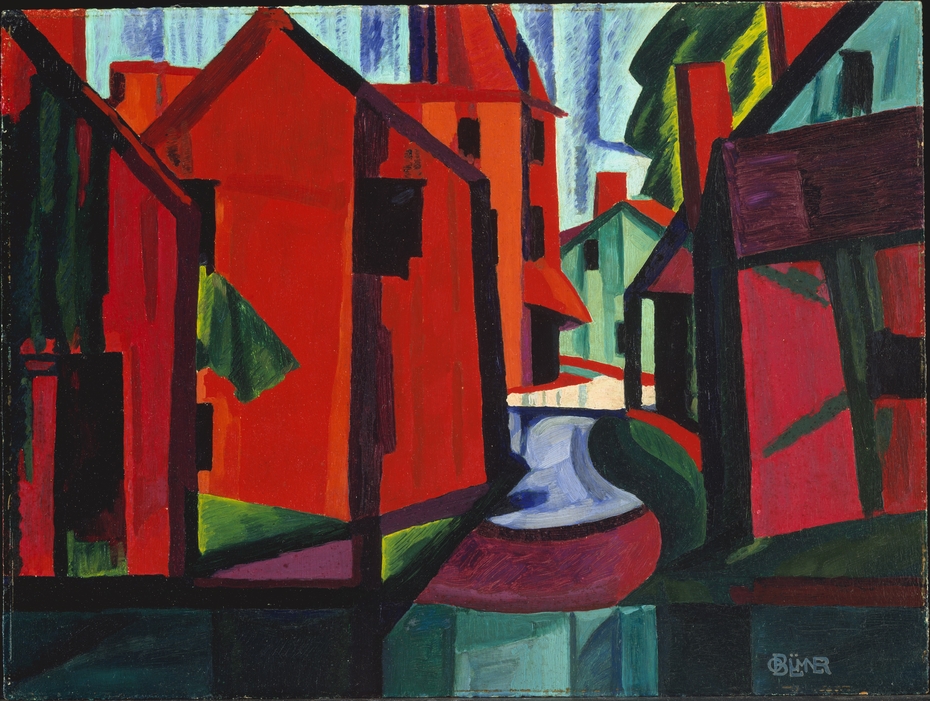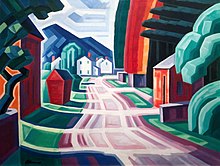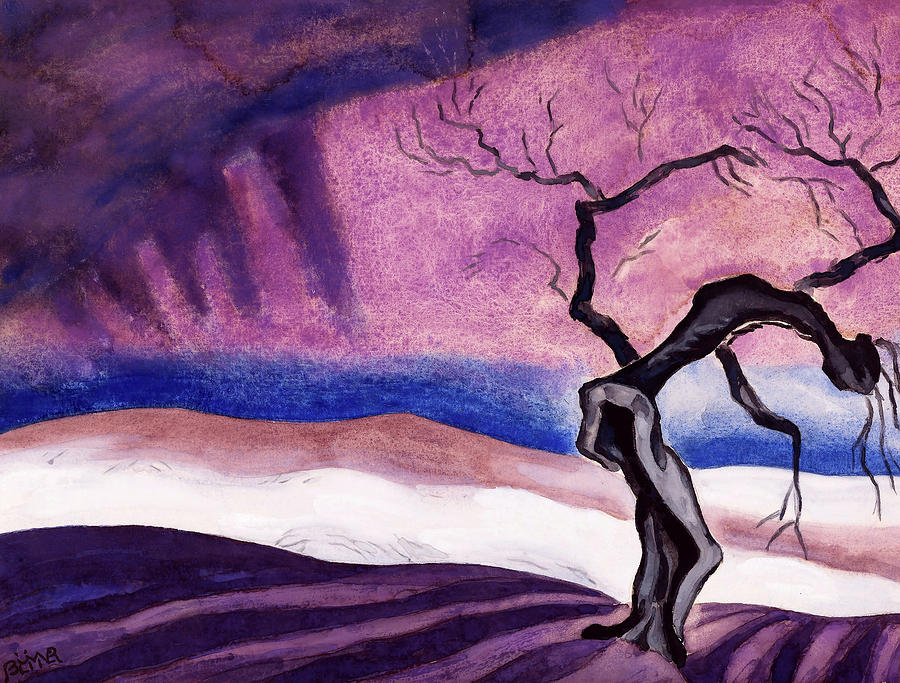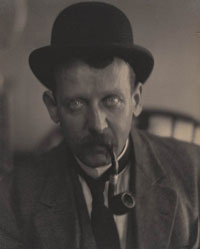 Oscar Florianus Bluemner
Oscar Florianus Bluemner
Born: Friedrich Julius Oskar Blümner
June 21, 1867, Prenzlau, Germany
Died: January 12, 1938; South Braintree, Massachusetts
Nationality: German American
Education: Royal Academy of Design, Berlin
Known for Painting, architecture
_________________
Oscar Bluemner: Visions of the Modern Landscape
Prior to his death in 1938, Oscar Bluemner wrote an essay for the catalogue of his exhibition, Oscar Florianus Bluemner, held at the University Gallery of the University of Minnesota in 1939, where he described the philosophy of his work: Landscape painting speaks to the soul like a poem or music, more intimately than any other kind of painting. I present a surprising vision of landscape by the daring new use of colorsI "introduced red" as Stieglitz said in 1915.
The artist classified his scenes as "Compositions for Color Themes," and in fact, often titled his works with musical themes such as Red Sharp, Red Flat, and In Low Key. Critics of the time felt similarly. Edward Alden Jewell in the New York Times (January 6, 1934) described them as "color music, building harmonies and rhythms," while Miss Breuning of the New York Post (January 12, 1935) termed Bluemner's expression of fantasy as an orchestration of brilliant colors, usually played in the upper reaches of the scale with big crashing chords of black to sustain the theme. The February 18, 1937 issue of Art Here described his paintings as having the boldness of Wagner and Brahms.
For Bluemner, color created the form and brought the landscape to life, while the combination of certain colors, their strength of tones, and their mass evoked emotion, a mood. When you "FEEL" colors, you will understand the "WHY" of their forms. The artist ascribed each color to a particular meaning or emotion:

- Red...chief color and maximum of everything artistic; the strongest attraction, signal, warning, symbol of power, vitality, energy, life. Fire, blood sunball, passion, struggle...excitement to rage. Advancing.
- Green...opposite of red. Repose...Middleground

- White... Light. Energy. Snow. Cold...Purity.

- Black...Darkness. Foreground. Sorrow...Society.

- Gray...Opposite of color. Neutral...Receding.
- Yellow...Light. Warmth. Cheerful. Heightened to orange
and red. Advancing. Intelligence. Opposed to:

- Blue...Coolness. Distance. SpacePassive. Contrast
to red. Cheerfulness to Depression.
- Violet...Distinction. Ceremonious, Rarity, Unrest. Distance. Light poor...closest to gray.
- (Bluemner in Hayes, Oscar Bluemner, pp. 91-92)

Bluemner was so intent on selecting the right colors and tones for his paintings that he labored scientifically over sketches with extensive notations and equations intrinsic to his philosophy, often found on the reverse of his gouaches and watercolors. Beauty of color was his primary objective and was generated by the predominance of one color which projects an idea, by modulation within the primary color to avoid monotony and to emulate nature with its generic tone variation, and by complementary color which enhances the principal color and is never equal in value. Only that which serves the beauty of color should be rendered ahead of "truth to nature." (Bluemner in Hayes, Oscar Bluemner, p. 21)[........................]
Debra Force=> Oscar Bluemner: Visions of the Modern Landscape
_________________

Oscar Florianus Bluemner - WikipediaOscar F. Bluemner - National Gallery of Art
Oscar Florianus Bluemner - Artnet
----------------------------Soundtrack:
Ludwig van Beethoven
Violin Sonata No.6 in A major Op.30, No.1
dedicated to Tsar Alexander I of Russia
1. Allegro
2. Adagio molto espressivo
3. Allegretto con variazioni
Maria João Pires, Piano
Augustin Dumay, Violin

Δεν υπάρχουν σχόλια:
Δημοσίευση σχολίου